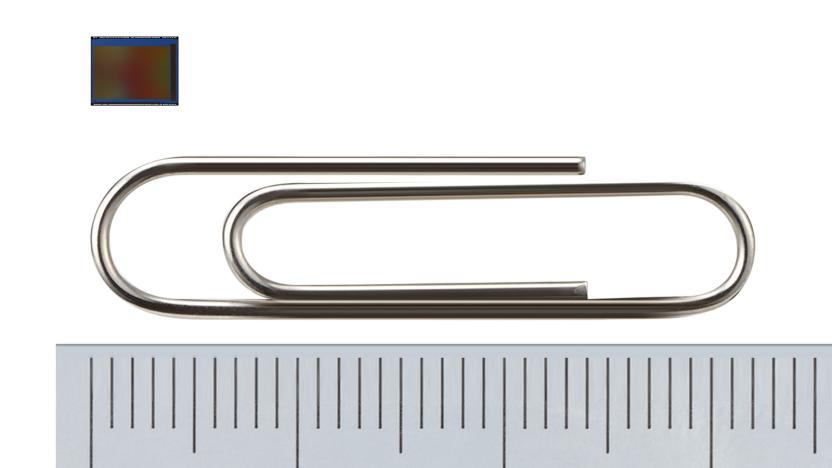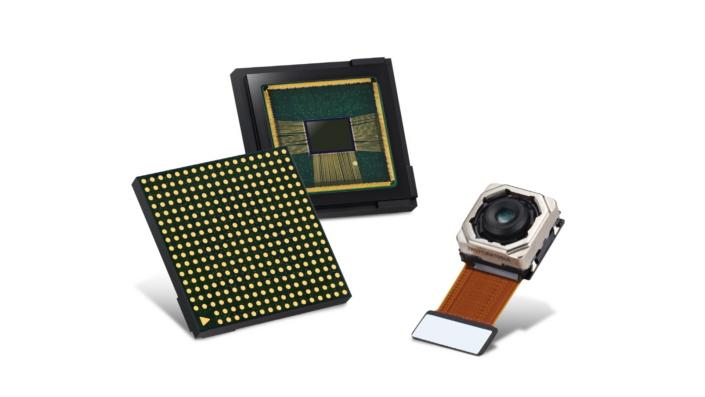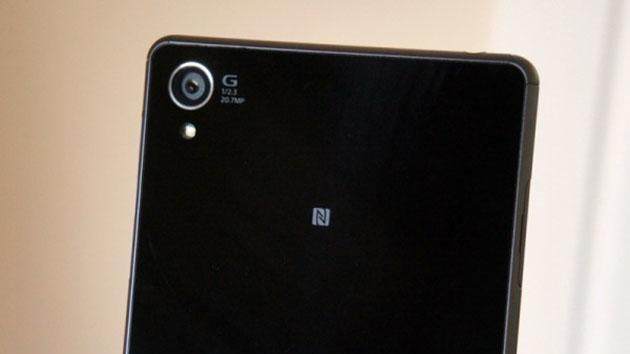ImageSensor
Latest

Samsung's 43.7-megapixel sensor has the tiniest pixels yet
Samsung's latest smartphone camera sensor above is under 5mm wide, but it has a resolution of 43.7 megapixels -- more than most DSLRs. That means the pixels on the "Isocell Slim GH1" are just 0.7 micrometers wide, beating the 0.8-micrometer pixels on Samsung's 64- and 108-megapixel sensors. "That will enable sleeker and more streamlined designs as well as excellent imaging experiences in tomorrow's smartphones," said image sensor VP Yongin Park in a press release.

Samsung's 48-megapixel camera sensor may pop up in the Galaxy S10
With its chip manufacturing prowess, it was only a matter of time before Samsung attacked the lucrative image sensor market dominated by Sony. It has unveiled a pair of very interesting sensors aimed at multi-camera smartphones, the 48-megapixel Isocell Bright GM1 and 32-megapixel Isocell Bright GD1. Both have pixel pitches of just 0.8 micrometers, letting Samsung pack incredible resolution into chips that are small enough to be used in multi-camera smartphones without bulking them up.

Sony unveils world's first 48-megapixel smartphone sensor
Is it best to have a high-resolution smartphone camera or a lower-resolution one with better light sensitivity? Sony says you can have both with its latest stacked CMOS image sensor. The IMX586 has the "industry's highest pixel count" with 48 megapixels, bettering high-end cameras like its own A7R III, all squeezed into a phone-sized 8.0 mm diagonal unit. At the same time, four adjacent pixels can be added together during low light shooting, yielding a 12-megapixel sensor that delivers "bright, low noise images," Sony said.

Samsung’s new camera sensor plays nice with phones besides the Galaxy S
Today, Samsung announced that the 16-megapixel ISCOCELL Slim 3P9 image sensor is now available. This image sensor is designed for cameras on mobile devices; because of its Tetracell technology, this 1.0μm sensor can work as a 2.0μm in front-facing cameras. It allows for better pictures in low-light environments.

See how InVisage's HDR sensor will improve smartphone filmmaking
It's been over five years since we heard from InVisage, a company developing a new kind of smartphone sensor with higher dynamic range and zero rolling shutter. It just produced a short film called Prix using a prototype chip to show exactly how the tech works. As a reminder, InVisage developed a photosensitive nano-coating it calls QuantumFilm that works differently than silicon. It claims that the material has "higher photosensitivity and electron sensitivity per pixel," which makes it react more like film than a typical CMOS sensor. It's also fast enough to instantly switch on and off, allowing the use of a global instead of a rolling shutter.

Toshiba is reportedly selling its camera sensor business to Sony
Toshiba's accounting scandal may cost it a lot more than just a CEO and a wad of cash. Sources for Bloomberg, the Japan Times and Reuters all claim that the tech giant is expected to sell its camera sensor business (specifically, its manufacturing plant) to Sony for about $165 million in a bid to raise funds. Neither company is confirming anything, but the talks are reportedly far along enough that you could see an official announcement as soon as next week. The reported selloff would mark the end of an era for Toshiba, although it wouldn't come as a total surprise if you knew the histories of both sides.

Sony's lucrative image sensor division is now a separate company
Sony is transforming one of its most successful businesses, image sensors, into a brand new company called Sony Semiconductor Solutions. All of its chips will be produced under the new company, but Sony said in a statement that "image sensors are a primary area of focus." The division will be carved away from Sony's devices group as part of a larger reorganization, and the rest of the group (storage and batteries) will be folded into other operations. Sony emphasized that the new company will operate "alongside existing Sony group companies," and start operating by April 1, 2016.

Sony's new sensor could bring DSLR-like autofocus to phones
While there's speculation that multi-sensor phone cameras are the next big thing, Sony has just launched a sensor that will likely make its smartphone cameras better soon. The latest Exmor RS IMX230 is a so-called stacked CMOS sensor that squeezes an effective 21-megapixels into a 1/2.4-inch sized form factor. The killer feature, however, is built-in 192-point phase-detection autofocus, which will keep fast-moving subjects sharp. The new chip also has integrated HDR for high-res stills and 4K video to save shots that are overly backlit or in shadow (see the image below).

Fujifilm and Panasonic's organic CMOS image sensor boosts dynamic range and sensitivity
We've all been enjoying the benefits of AMOLED displays for several years now -- high contrast ratios, wide viewing angles and vivid colors -- so it was only a matter of time until organic films ended up in image sensors. Fujifilm and Panasonic have been working on organic CMOS image sensors and just showed the results of their collaboration at the 2013 Symposium on VLSI Technology in Kyoto. By replacing the traditional silicon photodiode with an organic photoelectric conversion layer, researchers have created image sensors with a dynamic range of 88dB (the industry's highest), a 1.2-fold increase in sensitivity (compared to traditional designs) and a 60-degree range of incident light (vs. 30-40 degrees, typically). What does this mean in practice? Less clipping in bright scenes, better low-light performance and richer colors and textures. The companies plan to promote these new organic CMOS image sensors for use in a wide range of imaging applications, including next generation cameras and phones. We can't wait!

Researchers devise new image sensor that could meld screens with cameras
CCD sensors have long ruled the digital imaging roost, but a team of researchers at Johannes Kepler University in Linz, Austria have concocted flat, flexible and transparent image sensors that could eventually change things up. Made from a flexible polymer film suffused with fluorescent particles, the prototypes catch only a specific wavelength of light and shoot it to an array of sensors that surround the sheet's edge. At that point, the rig calculates where light entered the polymer by measuring how much it has diminished during its travel time, and then composes an image from that data. It's said the process is similar to how a CT scan functions, but uses visible light instead of X-rays. Not only is the membrane relatively inexpensive and potentially disposable, but the solution is a world's first, to boot. "To our knowledge, we are the first to present an image sensor that is fully transparent – no integrated microstructures, such as circuits – and is flexible and scalable at the same time," said Oliver Bimber, co-author of the group's paper. As of now, the setup only snaps black and white images with a resolution of 32 x 32 pixels, but there are plans to boost its fidelity by leveraging higher quality photodiodes (or even composite photos). Also, color photographs could be achieved by using several sheets that capture different hues of light. So, what's this all mean for practical applications? Researchers believe its prime use lies in layering the film on TV screens and other displays to offer gesture controls without pesky, additional cameras. In addition, objects can be imbued with sensor capabilities if wrapped with the layer, and even CCD's could benefit from having a slice of the polymer slapped on them to take photos at different exposures. Hit the second source link for the scientific nitty-gritty, or head past the break for a glimpse at the setup's photos.

Panasonic shows micro color splitters that double up image sensor acuity
Panasonic has developed a new type of imaging sensor that gets more photons where they need to be by foregoing the use of conventional CMOS debayering filters. Those can reduce sensor effectiveness by blocking 50 to 70 percent of the light, so researchers developed "micro color splitters" to do the job instead, which can separate hues microscopically using refraction. They did it by taking advantage of wave optic principals to create a new type of electronic "deflector" that can analyze and separate light wave frequencies much faster than previous methods. There's almost no loss of light during the process, and such devices can be made using conventional semiconductor fabricating techniques, too. There's no timetable for commercializing the tech, but Panasonic holds 21 domestic and 16 overseas patents on it -- meaning it's likely not just a science project.

Metamaterial camera needs no lens, could herald cheaper imaging tech
Metamaterials are proving to be quite useful for toying with the electromagnetic spectrum, whether for technology previously thought to be the stuff of science fiction, or for boring real-world applications. Engineers at Duke University have come up something that falls more into the latter category: a metamaterial imaging sensor that doesn't require a lens to generate a picture. The sensor is a flexible copper-plated sheet patterned with small squares that capture various light frequencies all at once, functioning like one big aperture. Add a few circuits with a pinch of software and the sensor-only camera can produce up to ten images per second, but the catch is Duke's only works at microwave frequencies. Microwave imaging is used plenty, however, and due to its flexibility and lack of moving parts, the sensor could be used to build better integrated, cheaper airport scanners and vehicle collision avoidance technology -- making you safer however you choose to travel. Unless you take the train. Then you're on your own.

Toshiba preps 13MP phone camera sensor that promises low-light shooting without the noise
Toshiba isn't the most vocal of mobile camera designers; it's often shouted out by the likes of OmniVision and Sony. It has reason to crow now that it's near launching a next-generation imager of its own. The 13-megapixel, CMOS-based TK437 sensor carries the backside illumination we already know and love for its low-light performance as well as color noise reduction that should fight the side-effects of such a dense, sensitive design. If we take Toshiba at its word, the visual quality of the sensor's 1.12-micron pixels is equal to that of much larger, less noise-prone 1.4-micron examples -- important when stuffing the sensor into 0.33 square inches. Photos will prove whether the achievement is more than just talk, although we'll have some time to wait when test samples will only reach companies in December. It's months beyond that before there's a production phone or tablet with a TK437 lurking inside.

Red claims Dragon is 'single most significant sensor in the history of image capture'
Red Camera's bombastic CEO, Jim Jannard, says that internal testing of the new 6K Dragon sensor proves that it's the new "resolution and dynamic range king." He also claims it will be "the cleanest sensor you have ever seen, ISO 2000 looks better than MX [the current sensor] at ISO 800." The imaging chip was first outed at NAB in April, promising 15+ stops of DR and 120fps at a full 5K of resolution, with $6,000 upgrades for Epic customers by the end of the year. Owners of the $9,700 (brain only) Scarlet-X will also get the Dragon, though no price or date has been given yet for that camera. Needless to say, some independent testing will be needed to substantiate his claims, but Jannard sure does sound confident.

The mysteries of the CCD revealed (video)
Sure, we've explained to you why sensor size matters in a digital camera, but maybe you need to take it back a bit. Maybe, you're not entirely sure how those sensors work in the first place. Well, Bill Hammack, better known as The Engineer Guy, is here to help. After breaking down LCDs and hard drives for your amusement and education, Bill has turned his attention to the CCD. The charge-coupled device is the heart and soul of many a digital camera, turning incoming photons into a charge that the impressively complex processor inside can convert into an image. What makes the CCD so impressive is it's rather ingenious solutions to problems such as interference (no wires, just a shift register) and color reproduction (pixel-sized filters and a hue-flattening algorithm). For more, check out the video after the break.

Sharp readying 1/2.3-inch, 20.2-megapixel CCD destined for noisy point-and-shoots
As you probably know, megapixels aren't everything. In fact, the more of them you cram into a smaller space, the noisier your images will be. So, you'll forgive us if we don't exactly shout from the mountain tops that Sharp has managed to stick a whopping 20.2 megapixels into a CCD only 1/2.3 inches in size. That does, however, give the RJ23G3BA0LT the highest pixel count in that size range. That's gotta count for something, right?

RED Dragon 6K sensor upgrade eyes-on (video)
"Obsolescence Obsolete" -- that's RED's tagline for the just-announced Dragon sensor upgrade, which is set to bring 6K resolution to EPIC and Scarlet cameras beginning later this year. The sensor module was on display at the company's NAB booth today, under a backlit case that could only have been designed to make photographing the new chip a near-impossible task. We did manage to snag a few frames of the device, which appears as a mere silhouette to the naked eye. Sensors aren't designed for us to look at, however -- they're supposed to do the looking -- so we won't get any more hung up on the presentation. Existing RED camera owners can look forward to an incredibly impressive 15+ stops of native dynamic range and up to 120 frames-per-second at resolutions up to 5K. And as we discovered earlier today, the upgrade will roll out to EPIC owners sometime in 2012 for $6,000 while Scarlet users will need to hang tight for a release date, and a price tag. That's all we've got as far as details go, so click on through the gallery below for a flashlight-enhanced peek at the Dragon.

Visualized: Nokia's 41-megapixel PureView sensor (updated with video)
If you thought a bigger pixel count just meant bigger file sizes, then take a look above. That big guy at the bottom is the 41-megapixel sensor we saw unsheathed in our hands on, and responsible for those awesome Nokia 808 PureView shots we saw at MWC on Monday. The two above it are 8- and 5-megapixel sensors respectively, and give you an idea of the real-estate cost of packing a superior snapper. At two and a half times the physical size of the N8's prized optics, we think the PureView system earns its title as the biggest thing in mobile imaging somewhat convincingly.Update: In case you're still confused, one of Nokia's chief camera experts Damian Dinning gives a thorough walkthrough of the technology in our Engadget interview. There's also a Nokia video after the break.

Sony's new cameraphone CMOS jams bigger gear into the same space (video)
Sony's done gone and developed a new back-illuminated CMOS designed to improve the state of your casual camerawork. Traditional units mount a merged pixel-sensor and circuit on a supporting substrate -- the innovation here is to produce the two separately and layer them without any additional material. This makes manufacturing easier and without a mount, you're able to lever-in bigger kit into the same space. It's also packing HDR Movie, which like the still-image version, will produce better moving pictures in tricky light. An eight-megapixel version will ship to cellphone producers in March, with a 13-megapixel edition following in June and if Sony's really successful, it might earn enough to buy a copy of Photoshop rather than producing release images in MS Paint.

Engadget Primed: Why your camera's sensor size matters
Primed goes in-depth on the technobabble you hear on Engadget every day -- we dig deep into each topic's history and how it benefits our lives. You can follow the series here. Looking to suggest a piece of technology for us to break down? Drop us a line at primed *at* engadget *dawt* com. The first thing I look for when purchasing a camera is something most aren't even aware of. It's not the brand name or the quality of the lens, the touch screen technology or the LCD screen size, and not the array of functions it offers or shooting presets available – it's the size of the image sensor. As a 20-year pro photographer who's captured over a million images during my career, I'm the guy who admires the parts of the engine instead of falling in love with the flashy exterior or high-end sound system. The image sensor is where the rubber meets the photosensitive diodes. In writing my first installment for Primed, I'll give a few definitions to clear things up a bit when it comes to a camera's image sensors and size, explain in detail the parts of a sensor, how it alters the photos (or video) you capture, where it came from, and why it's important to consider its size – I'll cover the meat and bones, get to the heart of the matter, the nub, the crux, the nuts and bolts, get down to the brass tacks, all while exhausting our thesaurus. Let's dive in, shall we?










